The Independent Order of Good Templars (I.O.G.T.) originated in Utica, New York State in 1851 and was introduced to Scotland by Thomas Roberts of Philadelphia in 1869. Deriving their name from the Knights Templars (because they were also 'fighting a great crusade' and legend is that the Knights drank 'sour milk'), the Good Templars adopted a similar organisational structure and regalia to the Freemasons. The principles behind the movement were "total abstinence enforced by a life-long pledge, and the absolute prohibition of the manufacture, importation and sale of intoxicating drinks as beverages".
The I.O.G.T. motto (adopted in 1852) was Faith, Hope and Charity. Organised into 'lodges' at local, district and national levels, each lodge was given the flexibility to "act according locality, time and circumstances". Unusually for the time, both sexes were admitted and were "on a perfect equality as to eligibility for office". Juvenile lodges could be formed for young persons aged from 5 to 18 years of age. The juvenile motto was Truth, Love and Purity. A fringed sash was worn by members (see illustrative photograph above of an unknown I.O.G.T. group) decorated to varying degrees with badges and initials to indicate office held. These sashes seem to have come in different colours including a purplish-blue and a red (see coloured examples below).
There was an International Supreme Lodge, a Grand Lodge of Scotland (instituted 1870), a North-East Fife District Lodge
and, from the 28 November 1872, a Robinson Crusoe Lodge based in Largo. Local lodges often had a special name (not necessarily just the name of the town or village). For example, Methil had the 'Anchor Lodge', Leven was 'Hope of Leven', Buckhaven was the 'Lifebuoy Lodge', Earlsferry had the 'Beacon Lodge', St Monance the 'Lifeboat Lodge', Cupar the 'Perseverance Lodge', Cellardyke the 'Guiding Star' and Kirkcaldy the 'Pioneer Lodge'. Prior to the formation of the lodge in Largo there had been a Largo and Lundin Mill Total Abstinence Society, some of the members of which went on to form the I.O.G.T. Robinson Crusoe Lodge. By 1875 the Robinson Crusoe Lodge had 56 members, some of whom are listed in the 12 February 1875 East of Fife Record piece above.
Here is a decoder for the typical positions of office:
GWCT = Grand Worthy Chief Templar
WCT = Worthy Chief Templar
PWCT = Past Worthy Chief Templar
WVT = Worthy Vice Templar
WS = Worthy Secretary
WC = Worthy Chaplain
WIG = Worthy Inside Guard
WOG = Worthy Outside Guard
WAS = Worthy Assistant Secretary
WT = Worthy Treasurer
WFS = Worthy Financial Secretary
WDM = Worthy Deputy Marshall
WRHS = Worthy Right Hand Supporter
WLHS = Worthy Left Hand Supporter
Initially meeting in a "lodge-room" at an unknown location (see Fife Herald piece below from 17 April 1873) and later in the old schoolroom on Emsdorf Road, the Robinson Crusoe Lodge grew to the point that they resolved to raise the necessary funds to build their own hall. An early fundraising event was a bazaar held in the Lundin Mill School on 4 August 1882, where needlework, plants and flowers, refreshments, etc. were on sale. The Good Templar Hall opened in 1886 (more detail on that to follow). The hall can be seen in the centre of the 1940s photograph further below, taken from the top of Hillhead Street.
The "Good Templar Guide: North-East Fife District 1898-1904" provides information about all the lodges within the District at the time and includes programmes for their activities. An example of the activities of the Robinson Crusoe Lodge (No. 830) is given below. Note that the lodge's own motto was "Work and Win". Meeting on Saturday evenings at 8pm in the Temperance Hall (with the Juvenile Lodge meeting beforehand at 6pm), topics covered included a look at newspaper cuttings, a magic lantern show and a 'hat night'. The 'hat night' was a popular event of the time, where people wrote topics on scraps of paper, put these in a hat and everyone took a turn to draw one out and deliver a short, off-the-cuff speech on that subject. Topics might include an item of news, a book, a local matter or a matter of specific concern to the group.
The Guide also tells us who the office bearers of the Robinson Crusoe Lodge were at the time. Officers were installed quarterly, so changed frequently. In the above example, Robert Williamson (son of plasterer Alexander Williamson and himself a plasterer) was the Chief Templar and John Sharp was the Deputy Grand Chief Templar. Secretary was Robert Williamson's sister Chryssie. Superintendent of the Juvenile Templars was Mrs Smith of Largo Place (wife of Robert Smith the Largo House gardener). Electoral Superintendent was James Gilchrist (son of builder Robert Gilchrist and himself a builder). Other example programmes and office bearers are given below.
In addition to the Saturday evening meetings, the lodge held picnics, open air meetings and cycle trips (the I.O.G.T. had its own 'Cycling Corps'). In 1906, the Order changed its name to the International Order of Good Templars. And in later years the elaborate ceremonies and distinctive regalia were phased out. The movement lost ground as society faced each of the World Wars. After the Second World War, the I.O.G.T. repositioned itself around peace-related work. Although internationally it did recover, in Largo it would not be able to rebuild.
The strength of the Robinson Crusoe Lodge began to fade as stalwart members passed away, including Robert Smith in 1919. The newspaper piece below from the 19 April 1928 Courier talks of how Mrs Smith (born Annie Greig Welsh, daughter of Lower Largo Postmaster Alexander Welsh) "has kept the banner of temperance flying alone" in recent years. In fact Mrs Smith died the following year and, while the Robinson Crusoe Lodge still owned the Temperance Hall in 1935, by 1940 it had passed to the Grand Lodge of Scotland, suggesting the end of the Largo-based Lodge.
During the Second World War the hall was used by the Home Guard, among other things. In 1946, the 'Robinson Crusoe Social Club' came into being (evolving from its forerunner the Lundin Links and District Community Social Club). This group took over the hall some months later (more to follow on them in a post coming soon). The 'Robinson Crusoe' name presumably being retained in recognition of the Good Templar Lodge that existed for seven decades and was once an important part of many local people's lives.

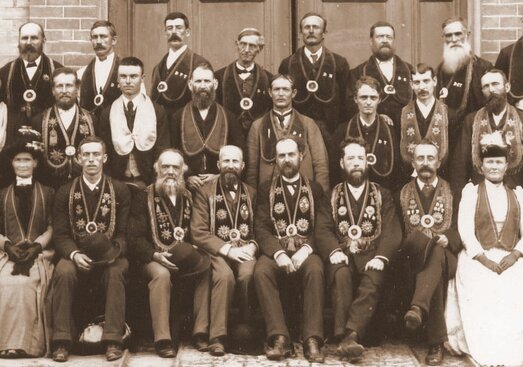
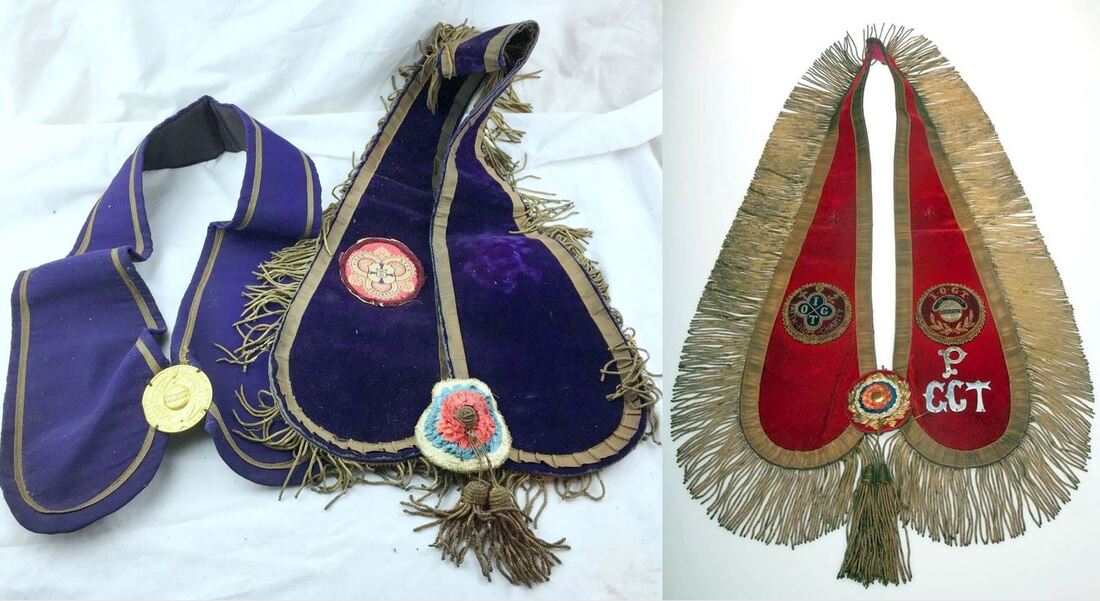
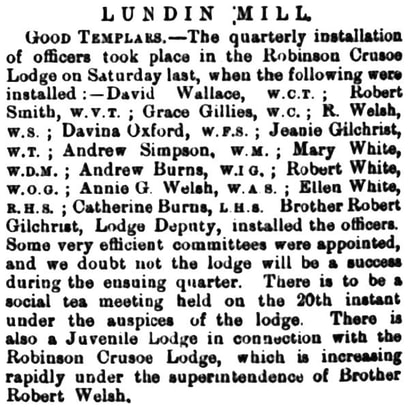
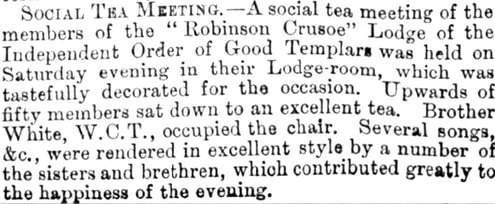
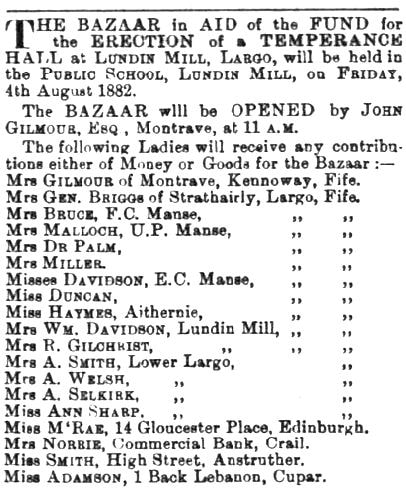
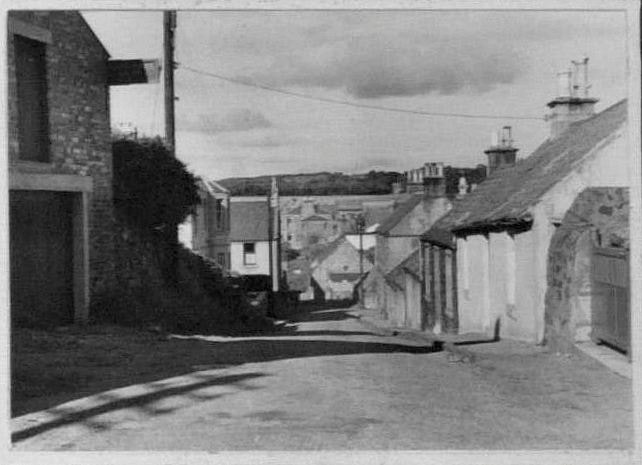
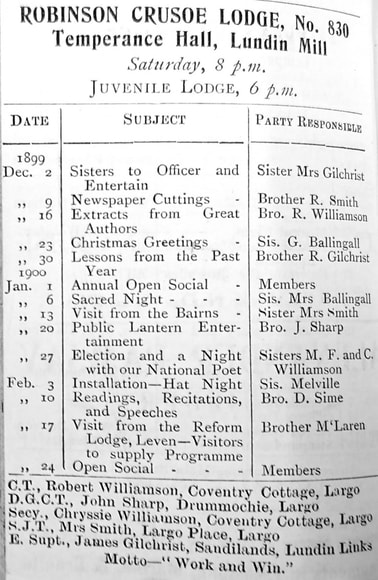
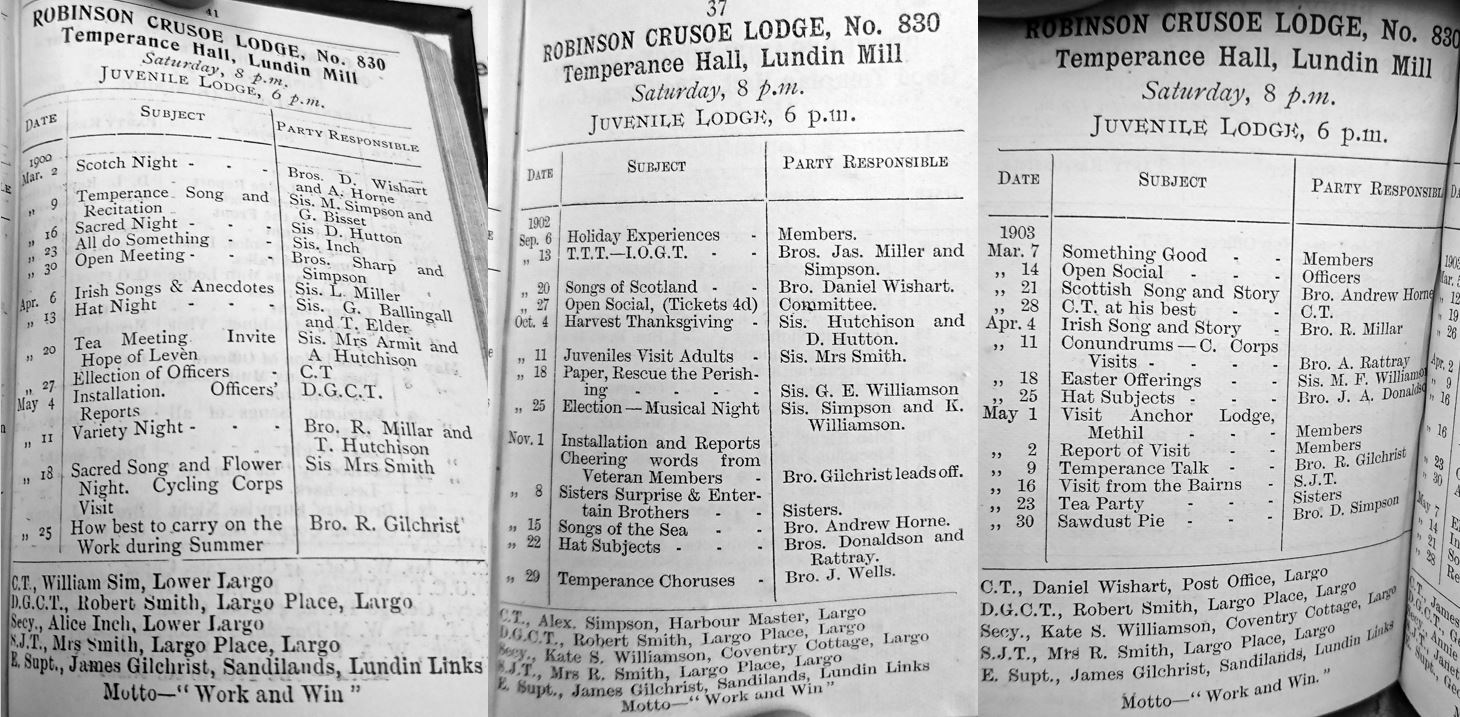

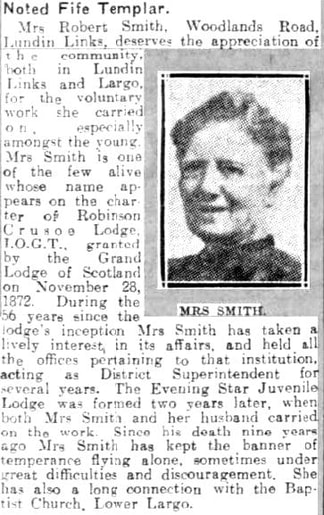
 RSS Feed
RSS Feed
